How to Make Colombian Arepas
Your step-by-step guide (with pictures) for how to make arepas.
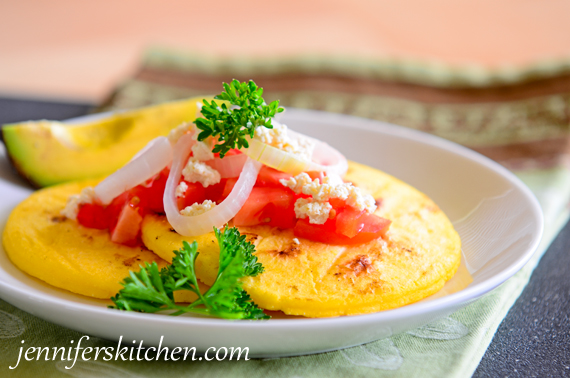
My friend, Angela (who is originally from Colombia), came over the other day to teach me how to make Colombian arepas. It was so much fun!
Arepas are flat, round, unleavened corn cakes that are eaten in a variety of ways and with all kinds of toppings – sort of how Americans eat bread. And just as bread can vary in flavor, color, and shape, so can arepas.
How To Make Arepas
First, Angela cooked whole, dried corn kernels in salted water for 1 to 1 1/2 hours or until they were somewhat soft, but yet firm. She said you can know when they are done by squeezing a kernel between your fingers – they should feel tacky or sticky.
Then she drained the corn in a colander and rinsed it with cold water.
After it was cool, she put the corn through her juicer to grind it into a stiff, pasty dough. She said you can also grind it in a hand grinder.
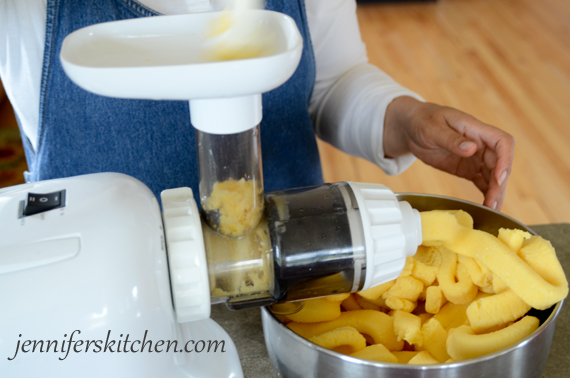
Making Arepas without Grinding Your Own Corn
A little research on the internet revealed that one can also purchase arepa flour that is specially prepared for making arepas. Not recalling ever seeing arepa flour at the grocery store, I looked on Amazon, and sure enough, I found Pre-cooked White Corn Arepa Flour there.
I didn’t see any organic options, and since I’m concerned about GMO, I decided I would need to buy whole, organic corn and grind it myself like Angela.
I’ve also wondered if organic masa harina would work to make arepas. Has anyone tried this?
(Note: Apparently, several of you have. Some say masa harina can be used to make arepas. Others say if you use masa harina to make arepas they won’t be very good. Would love to know if anyone has been able to make soft, fluffy arepas with masa harina.)
Making Arepas Continued …
She then formed the dough into round, flat, patties. It was quite amazing to watch her shape the dough. She was incredibly fast.
It was quite obvious that she had done that a few times!
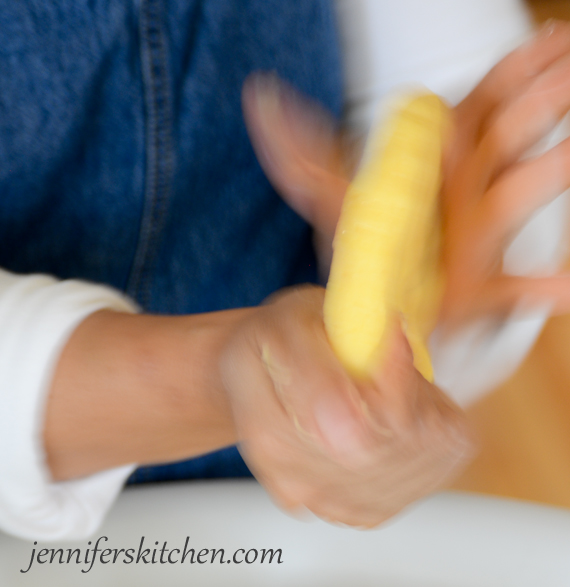
Thankfully, she also showed me a method that is much easier for beginners like me. She took a ball of dough and put it in between two pieces of plastic. (We used a plastic bag that we had cut open on the sides.) Then she put the plastic-sandwiched dough onto a round lid and rolled it out with a rolling pin.
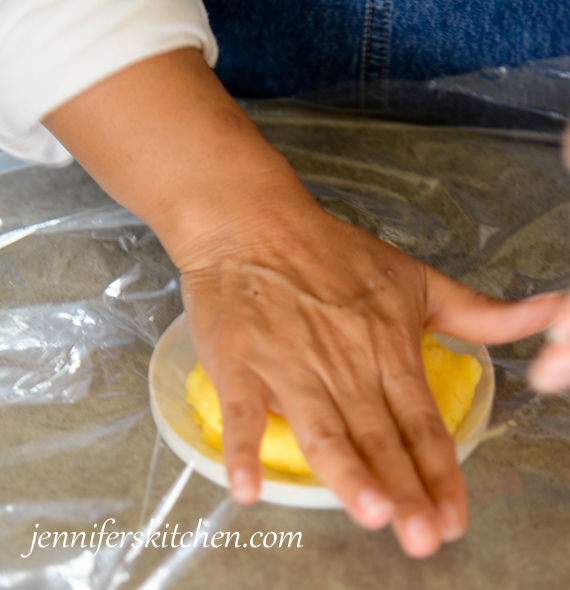

It worked great!
Soon we had a plate full of arepas ready to cook.
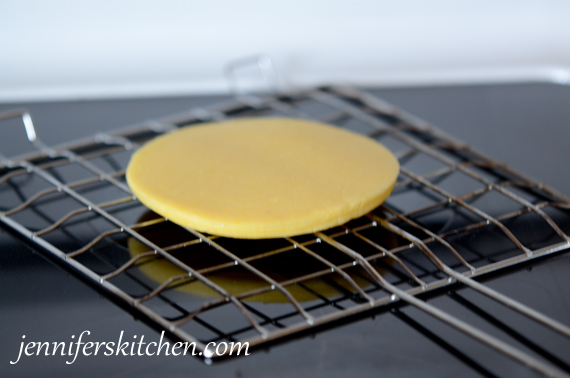
Arepas can be grilled, baked, boiled, or fried. Angela cooked ours on the stove top on metal racks (like the ones you use when camping or like the kind you use to cool cookies on after taking them out of the oven). She said you can also cook them on a pancake griddle or frying pan.
We cooked them for about 3 minutes on each side or until they were nicely browned.
And when they were done, we ate them!
Arepas are very simple, so they’re usually eaten with some sort of topping. Angela said that in Colombia they often ate them topped with eggs, onions, and tomatoes.
We ate ours with strawberry jam and blackberry jam. They were delicious : )
Thank you Angela!
You my also like:
Before you go . . .
Did you know that you can eat all this delicious food AND lose weight? You can!
No calorie counting. No portion sizes.
Join my online weight loss program today!

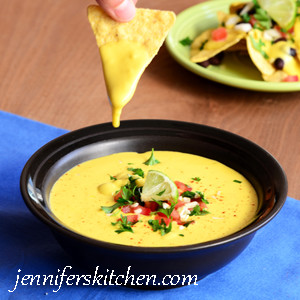
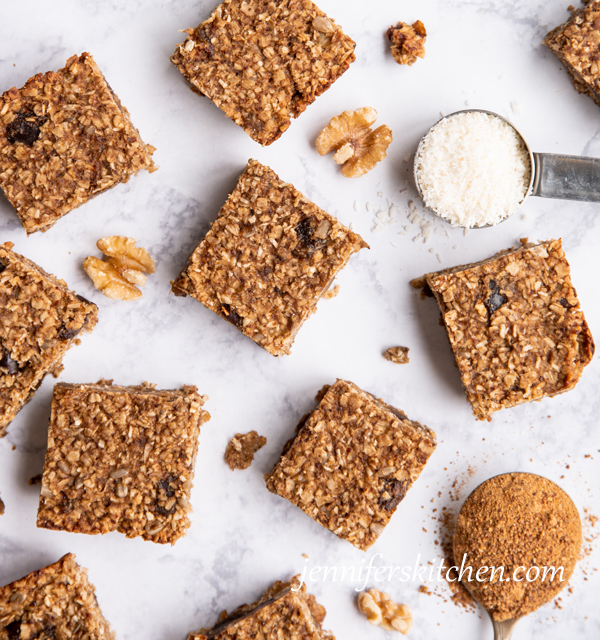


Thank you so much for this recipe. My husband is Colombian and I stopped making arepas a few years ago because I couldn’t find a recipe without that awful precooked cornmeal. I wonder if I could use organic super fine corn flour and add water?
When I make Arepas I always use Harina PAN. Its in every grocery store I’m pretty sure.
Here are 2 links for non-gmo Harina or Masa.
https://www.arepasstation.com/product/flours/harina-pan/
King Arthur Masa Harina, Certified Organic, No GMO Project Verified, Gluten Free, 2 lb https://www.amazon.com/gp/product/B096CRH8GS/ref=as_li_tl?ie=UTF8&tag=newmeaweilos-20&camp=1789&creative=9325&linkCode=as2&creativeASIN=B096CRH8GS&linkId=16ee05d562999e782461dfb63e92662b
What kind of corn do you use? Is it the hominy type corn?
Thanks.
Hi! Absolutely love arepas but rarely make them here as impossible to find non-GM masarepa. When you say you used dried corn, did you use the popping corn? That’s the only dried corn you can get in Europe…any tips appreciated. Thanks.
Hi Eleanor,
Yes, I am finding that same problem here in the U.S.
The corn I purchased was homegrown organic, non-GM corn – like field corn (not popcorn). Unfortunately, I haven’t been able to find it commercially. I keep looking and hoping, but none so far.
Hopefully, because of the demand, non-GM masarepa will be more readily available soon. Also, I’m wondering if organic masa harina would work.
Jennifer
Jennifer Can you find a food co-op? I get my whole grain dried corn for corn meal or with plenty of cooking for corn in chili or other cooked food, and which I will try pressure cooking then grinding to make arepas, from our Breadbecker’s co-op delivery every 4 months and in the past got it from a now defunct co-op. Good luck.
I have started making and I like them very much. Homemade , no gluten. But I would like organic because I am wary of GMO’s. Can I use cooked polenta after it is finely ground and cooked? Please advise.me. Thank you.
Hi Lisa,
I have the same concern, but since I’ve heard that polenta doesn’t work for arepas, I’ve never tried it. But I should still give it a go sometime so I can know from experience 🙂 Let me know if you try.
Organic masa harina may work, but I haven’t tried it.
Jennifer
Hi there!
This is the only place I have found on the internet for making your own masarepa! When you say “cook” does that mean boil the corn? simmer the corn?
Thanks so much!
Amelia
Hi Amelia,
She cooked them at a very low boil. The exact temperature and the length of time didn’t seem super critical. She tested the corn every 10 minutes or so after about an hour of cooking to see if it was done. If it wasn’t “sticky or tacky”, she continued cooking it.
I hope this helps.
Jennifer
Same!!! I am now boiling my flour corn kernels in salt water!! Fingers crossed. I don’t have a juicer to grind though.
Anyone make the corn grains in a pressure cooker?
I tried this but for some reason the dough that came out of the juicer was thick and still had the corn husks so looked nothing like what you got in the picture. Are you using a special attachment for the juicer? Did you do anything else to the corn after it had been cooked? Did you soak the corn overnight? Thanks for this. Am Colombian and desperate to find an organic Non-GMO option for my arepas!
Hi Ricardo,
I’m definitely not an arepa pro, but my guess is maybe it was your juicer, since the husks should not be in the dough after they go through the juicer. Or maybe your corn was too old. Angela used dry corn, but I think it was very recently harvested from her neighbor’s field. I’ll contact her and see what she thinks.
Best,
Jennifer
Just tired this with my juice extractor – looks like same one in the picture. Was puzzled how to remove the kernel husks as well, but will try other attachments. I had to take ground cooked corn and press it through a sieve to remove the husks – very labour intensive. Would also like to know how the juicer extracted the husks, thanks!
Hi Jennifer and Ricardo,
I apologize to take so long to reply to this post. I’ve been extremely busy lately.
What you can do is Soak the dry corn in the morning with hot water and leave it soaking all day (12 hours)
At night wash it and place it on a slow cooker and leave it over night. You can add the salt at this time.
The next day check it’s softness. If it’s soft, then you take it out to drain it in a colander. Then pour cold water to wash away the slippery parts that are loose. Drain it well and add more salt, to your liking.
Now proceed to grind it in a food processor or a slow Juicer like Omega series with the adapter for grinding (not the juicing part).
You proceed to make a small ball in the palm of your hand, flatten it and give it the round shape of the Arepa.
Put in the oven (Broil) so that it is roasted on both sides
You can accompany it with Guacamole, Scrambled Eggs with tomatoes and onions. Be creative.
Thank you, Angela! Advice from the pro. We really appreciate it! Thank you.
I have had success with a company called Gold mine White corn masa Harina. I bought it off amazon. Its organic. Made some good arepas.
Thank you, Tara. That’s really helpful. Here’s link to the Gold Mine masa harina in case anyone is interested. 🙂
Jennifer
Masa harina does not work. That is uncooked and used for tortillas. The precooked cornmeal is the key to arepas and empanadas. Cooking before grinding creates a gummier and fluffier consistency. Otherwise you make corn bread type stuff (like tortillas). I also have had to resort to making my own to avoid GMO corn. :((((((
Thank you for the advice, Erica. I suspected that masa harina would not work since Angela (my friend from Colombia) used field corn to make the arepas. She soaked the dry corn in hot water for 12 hours, then rinsed it, then cooked it in the slow cooker overnight, then rinsed it again in cold water. It did make wonderfully fluffy arepas. Delicious!
We have en Colombia around 75 types of arepas. I use a Weston meat grinder to grind the corn, leave the husks it is part of the arepa. I soak overnight too and I don’t have a pressure cooker so it takes me almost an hour to cook the corn (electric stove) Masa harina does not work and neither polenta. PAN is a brand that will give you something better if you are not using corn.
75 types of arepas! Wow! I would love to learn how to prepare some of the different varieties. ?
Thank you for the helpful information. I have wondered if a meat grinder would work to grind the corn.
Muchísimas gracias por su comentario.